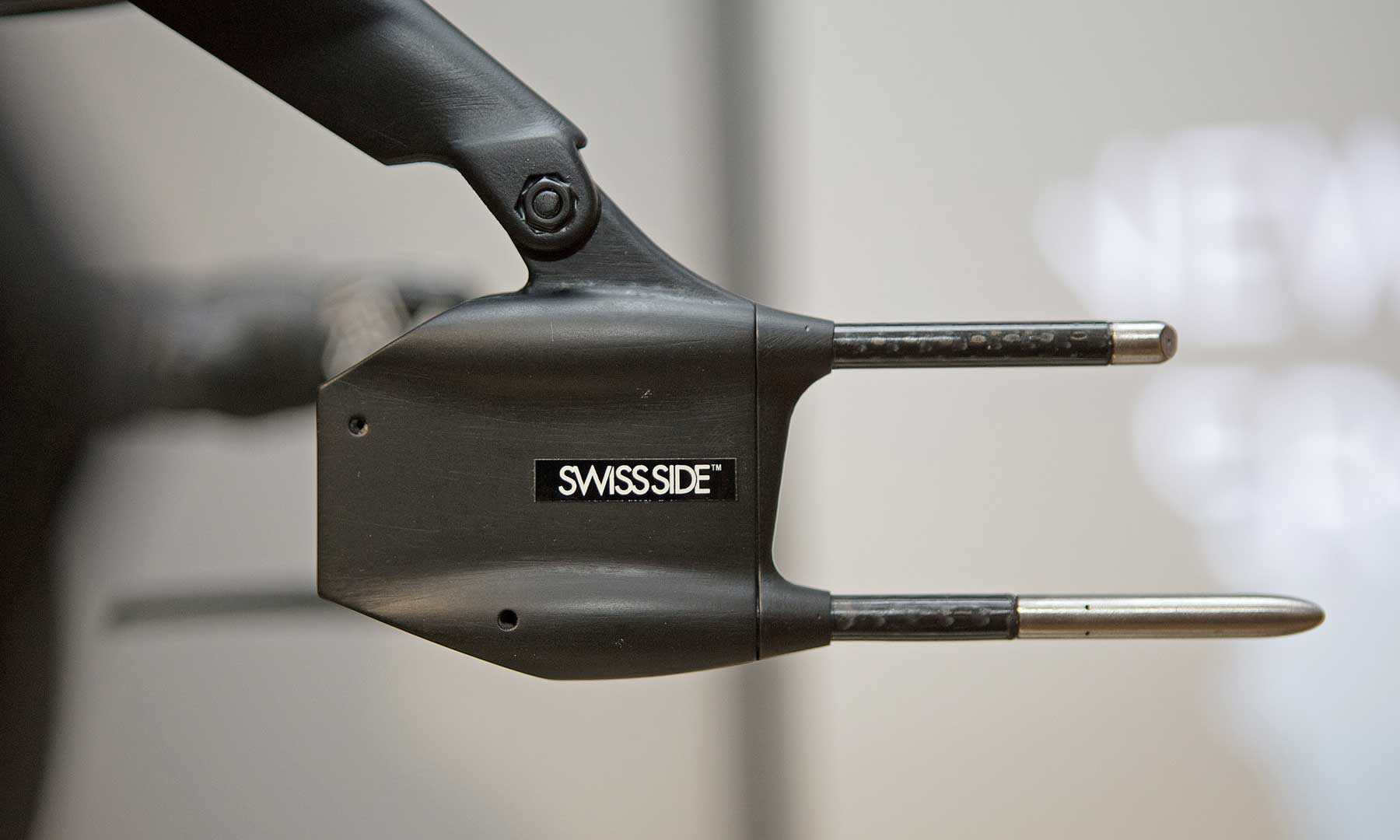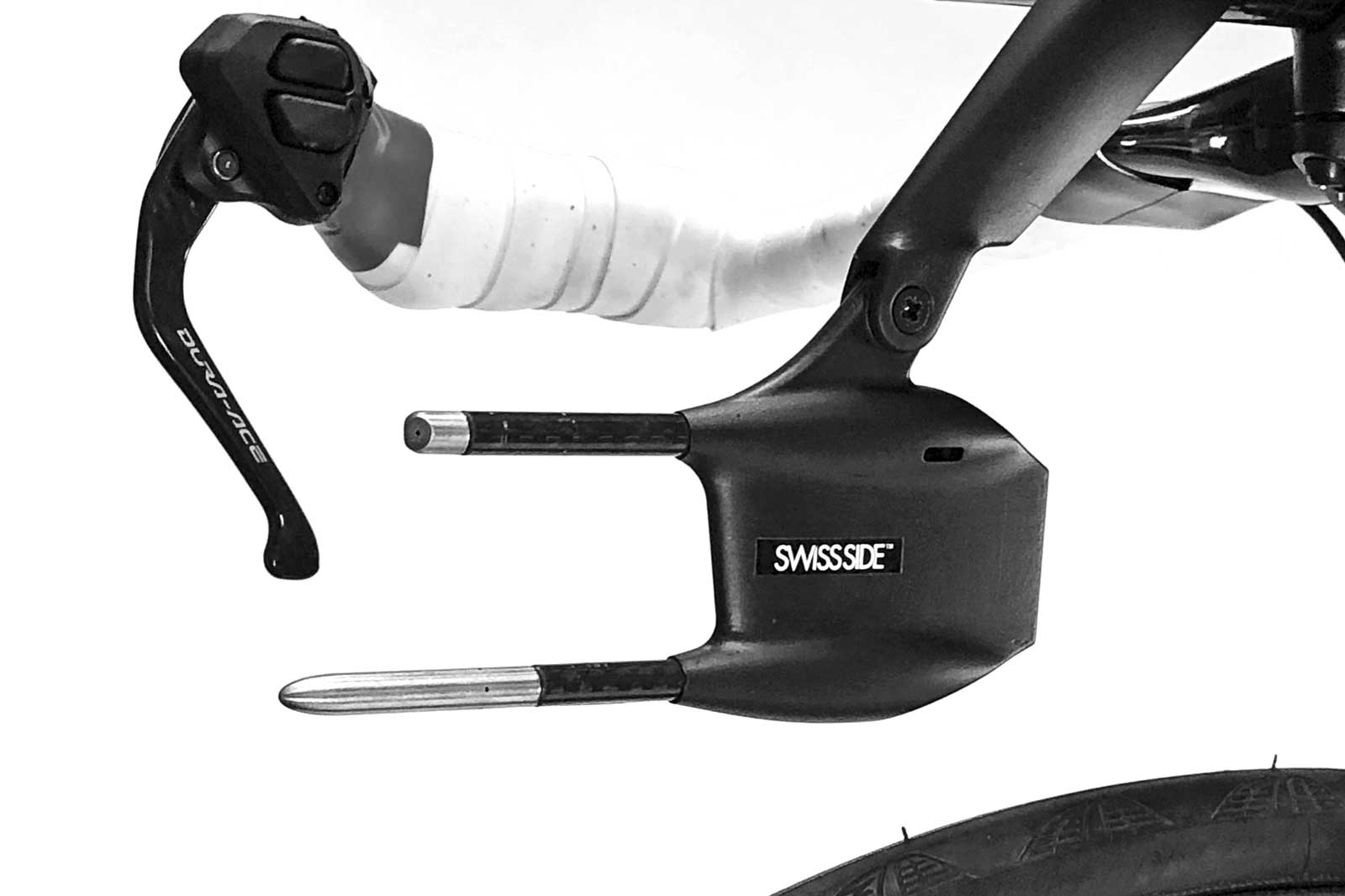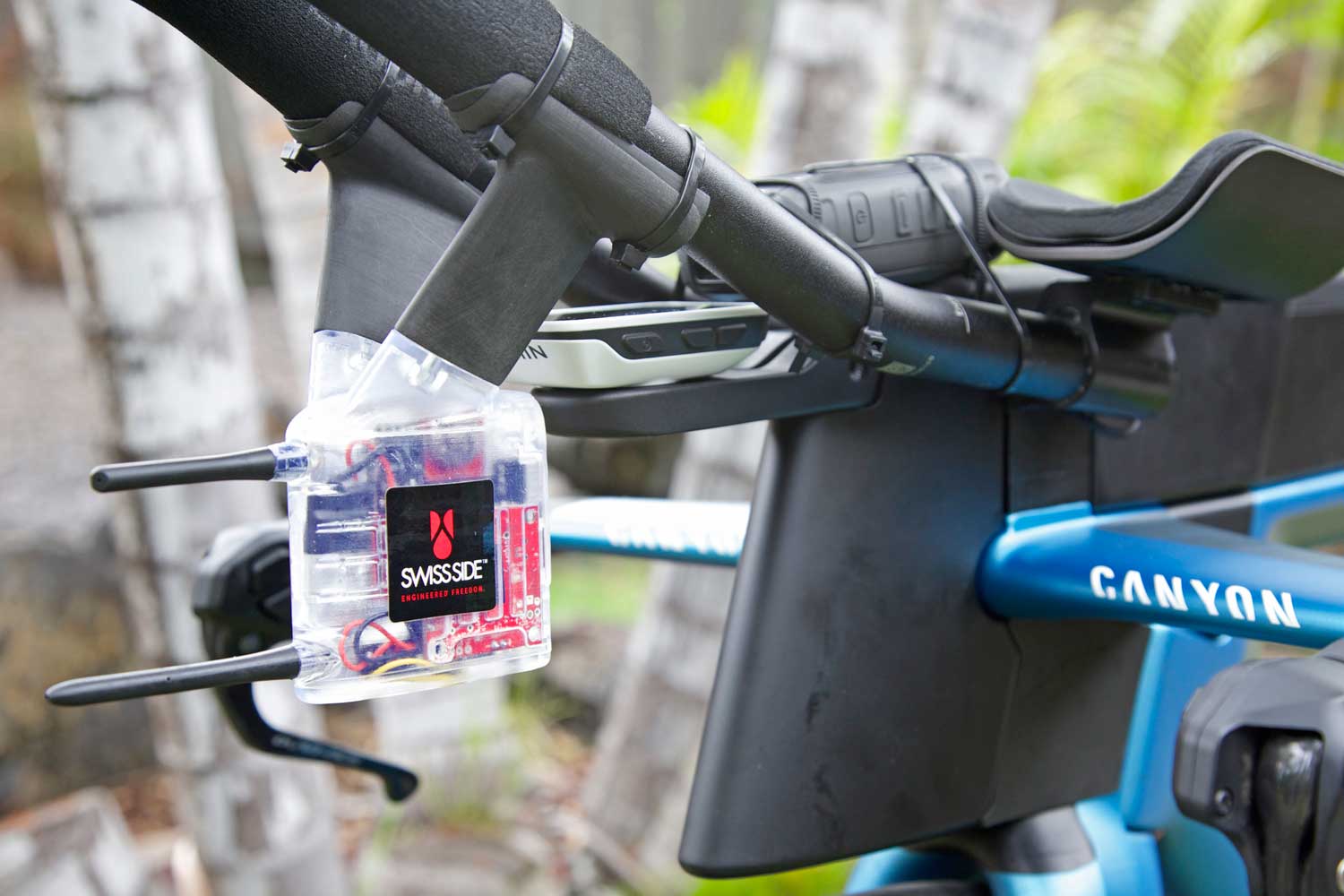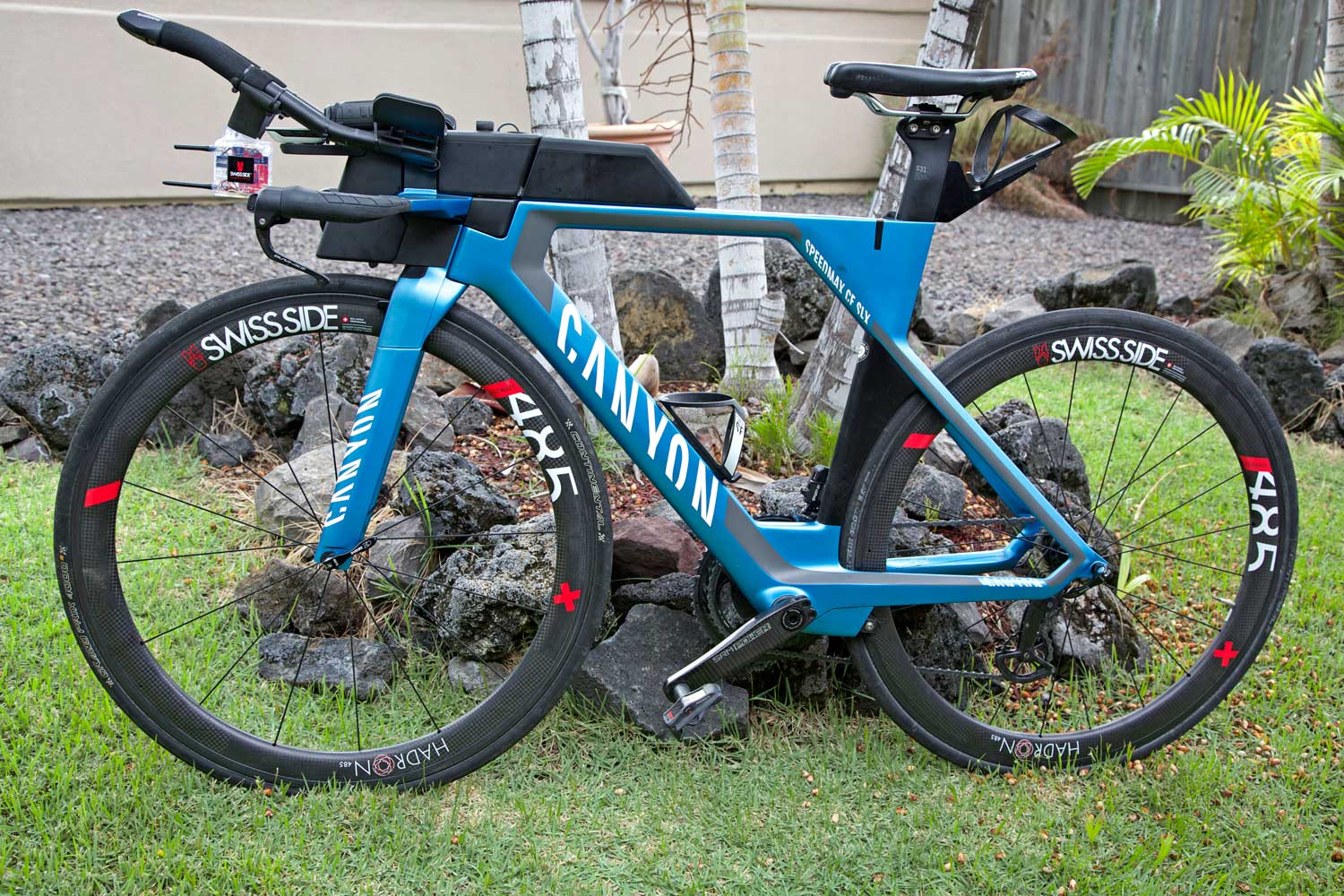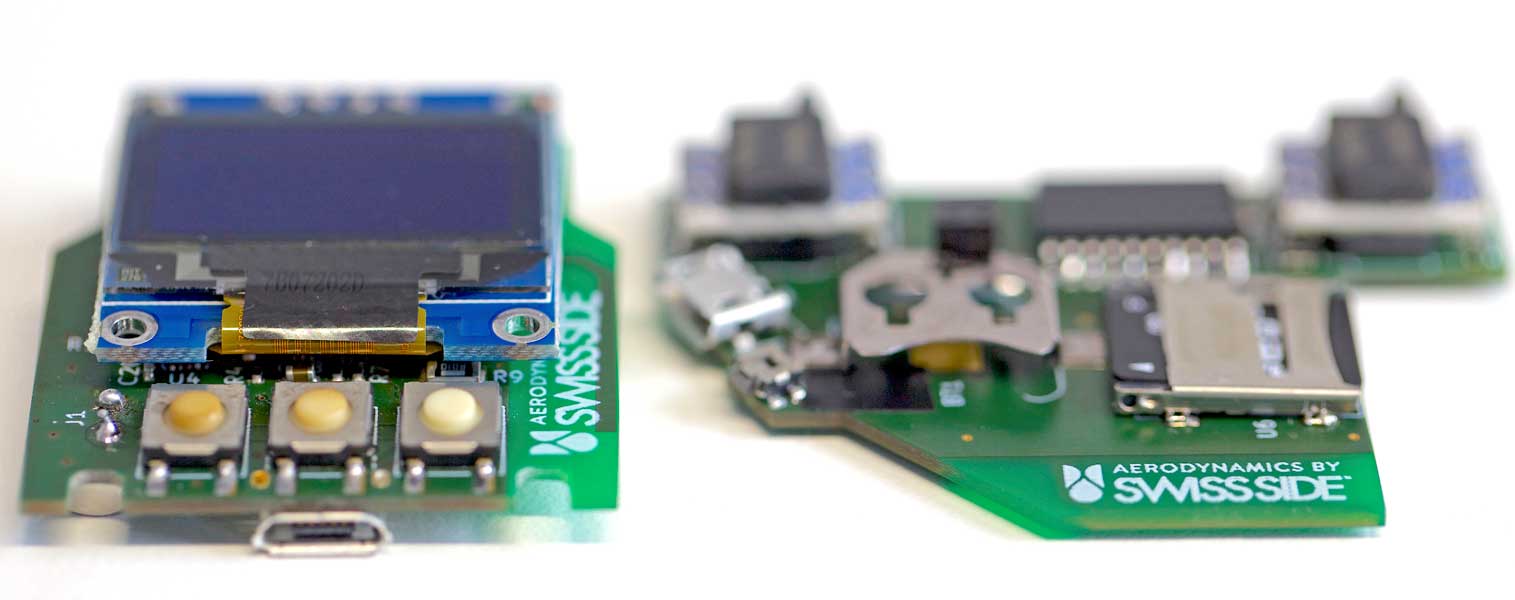Developed as a prototype to collect real race & fit data from Kona, the upcoming AeroPod is an evolution of the instrumented bike Swiss Side developed to optimize their wheel aerodynamics. Now in a compact form that hangs under the handlebar, Swiss Side is turning the AeroPod into a consumer device so you too can measure your own real world aero drag out on the bike.
AeroPod compact aerodynamic drag measuring tool
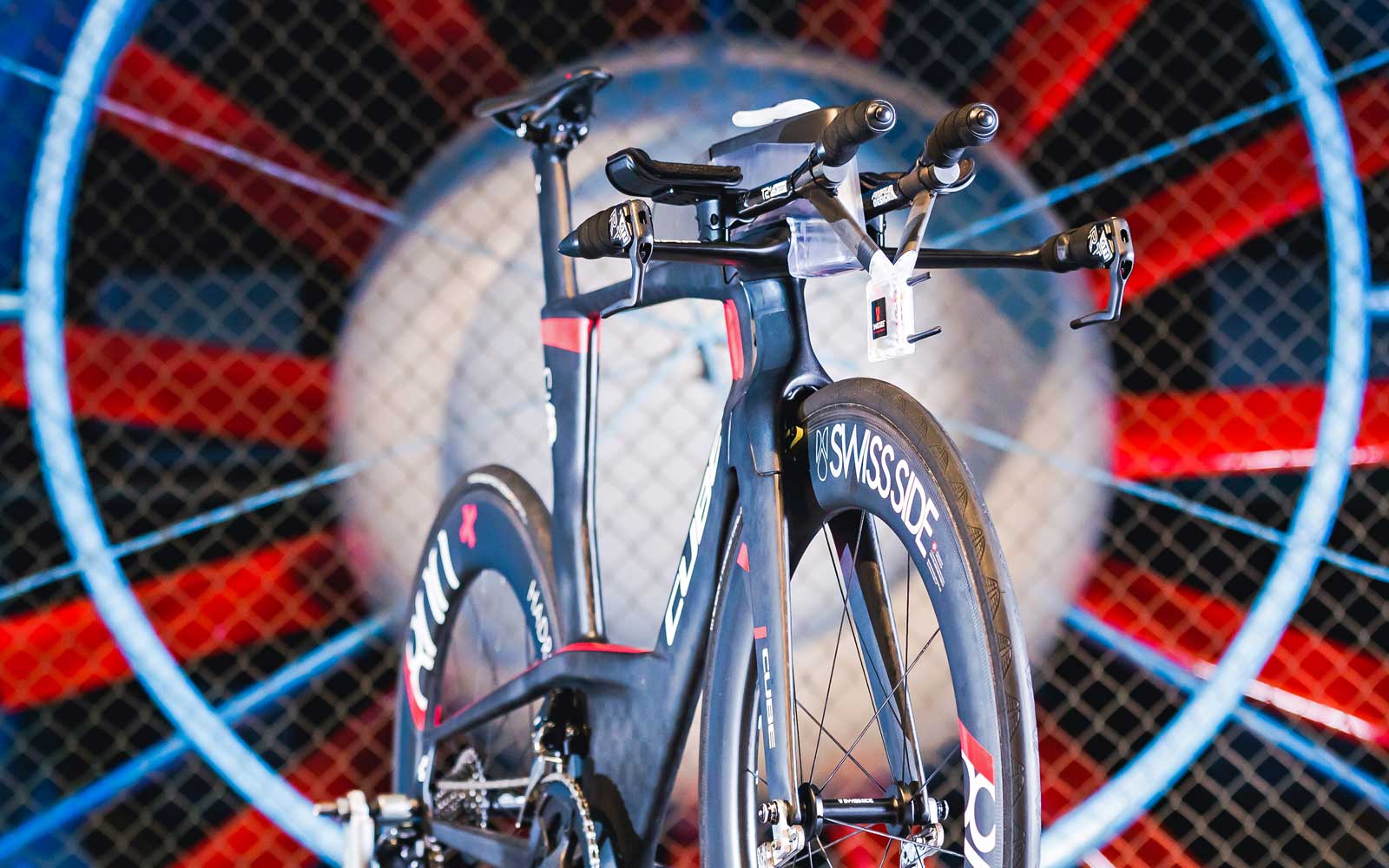
After announcing their new aero Hadron road wheels at the end of February, Swiss Side had more gadget news to share. Paired with bringing a new advanced aerodynamics specialist to the team from Formula 1 – Dr Seamus Mullarkey, Swiss Side has unveiled a new data collection tool that was developed both for their own aerodynamic projects and their professional racer support. The new AeroPod is the latest evolution of Swiss Side’s aerodynamics R&D. It takes the sensors and data collection tools Swiss Side has created over the last several years and packs it all into a small, sleek form factor that can be neatly integrated into an aero handlebar setup.
Swiss Side says that they “not only want to develop the fastest products for the road and triathlon cycling markets, but also wants to make aerodynamics understandable and most importantly, measurable, for everyone.”
Their new “wind tunnel for the road” began life as a project back in 2014 when they built their Instrumented Bike to collect real world aero data on the road to verify the wheel aerodynamics that they developed in CFD and refined in the wind tunnel.
The new AeroPod device is meant to measure the aerodynamic drag of the complete bike + rider equation in real wind & weather conditions on the road, and to do it at the highest level of accuracy to log useful data to help riders fine-tune their aero setup.
Swiss Side has already utilized a functional prototype of the device in the lead-up to 2017’s Ironman World Championships in Kona, Hawaii. That device was used by a few competitors, including the ultimate winner and now world champion Patrick Lange, to dial in his race day setup on the bike.
Tech details
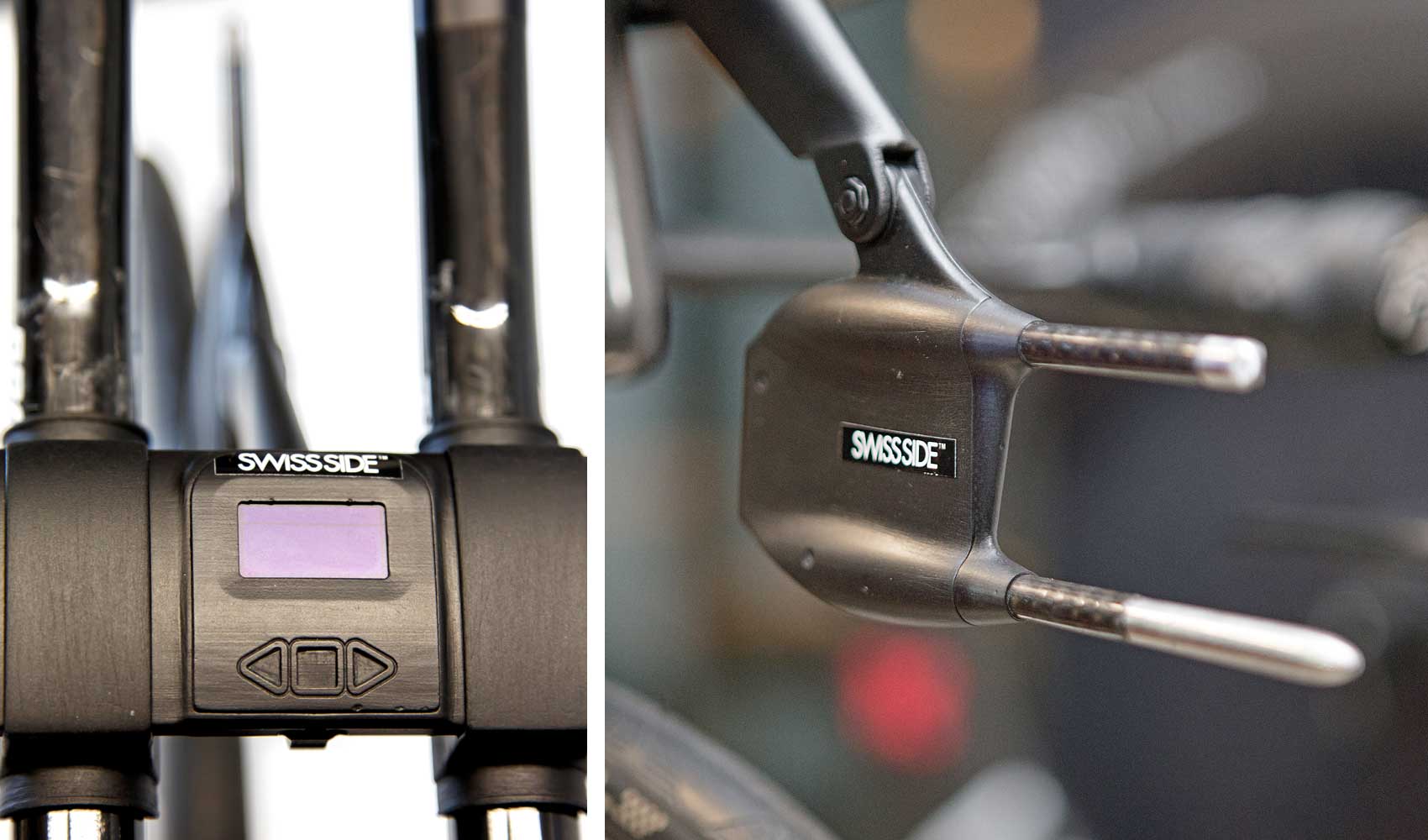
Details remain thin for the time being, but the production device will mount between the aero bar extensions with a simple display indicating real drag figures. What we have been shown is a then a secondary small device that will be hung on an adjustable mount to be directed forward into the wind. The two-part device will split the electronics between the two pods and will store data locally on removable media.
A commercial product delivery timeline is not set yet (nor is pricing), but Swiss Side is confident in the AeroPod’s development and expects a consumer-ready product in the very near future.
